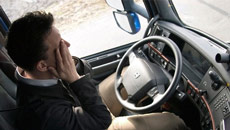To get a blonde look, you soon may not need to visit a hair clinic or a specialist barber. A single-letter change in the genetic code is enough to generate blonde hair in humans, fascinating research shows.
In a first, the study outlines how tiny DNA changes can reverberate through our genome in ways that may affect evolution, migration and even human history.
"This particular genetic variation in humans is associated with blonde hair, but it is not associated with eye colour or other pigmentation traits," said David Kingsley from Howard Hughes Medical Institute (HHMI) at Stanford University.
According to Kingsley, a handful of genes likely determine hair colour in humans.
For over a decade, Kingsley studied the three-spined stickleback, a small fish whose marine ancestors began to colonise lakes and streams at the end of the last Ice Age.
The researchers found that the blonde hair commonly seen in northern Europeans is caused by a single change in the DNA that regulates the expression of a gene named Kit ligand.
"The very same gene that we found controlling skin colour in fish showed one of the strongest signatures of selection in different human populations around the world," Kingsley explained.
Kit ligand encodes a protein that aids the development of pigment-producing cells.
"So it made sense that changing its activity could affect hair or skin colour," researchers said.
Catherine Guenther, an HHMI research specialist in Kingsley's lab, began experiments to search for regulatory switches that might specifically control hair colour.
"When we found the hair follicle switch, we could then ask what is different between blondes and brunettes in northern Europe," Kingsley said.
Examining the DNA in that regulatory segment, they found a single letter of genetic code that differed between individuals with different hair colours.
"Given Kit ligand's range of activities throughout the body, many such regulatory elements are likely scattered throughout the DNA that surrounds the gene. We think the genome is littered with switches," Kingsley emphasised.
It is clear that this hair colour change is occurring through a regulatory mechanism that operates only in the hair.
"This is not something that also affects other traits, like intelligence or personality. The change that causes blonde hair is, literally, only skin deep," Kingsley added.
The study was published in the journal Nature Genetics.






